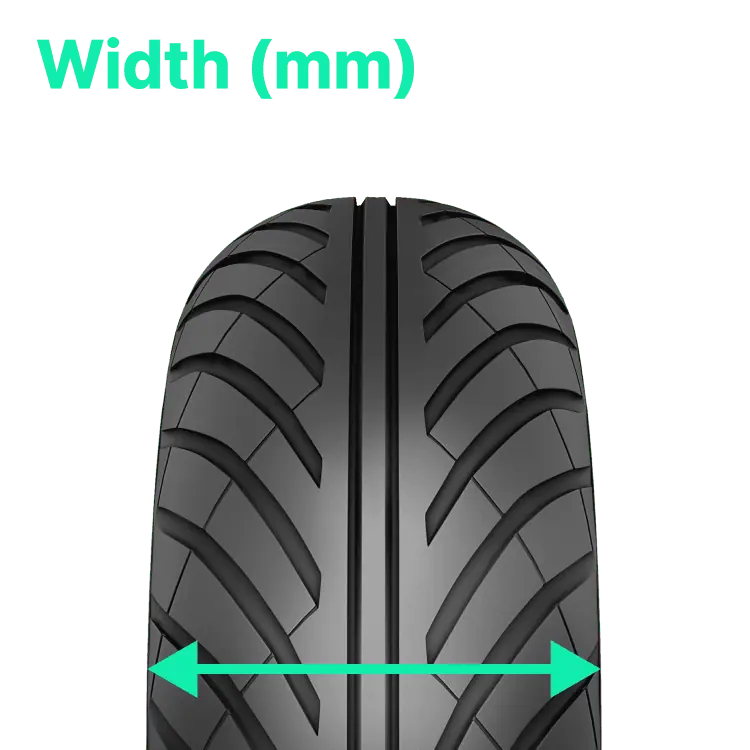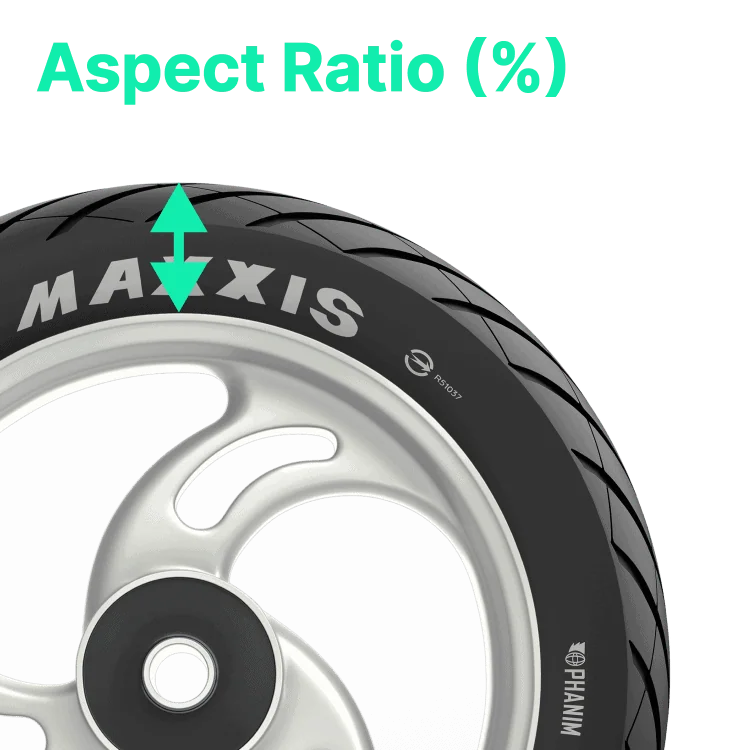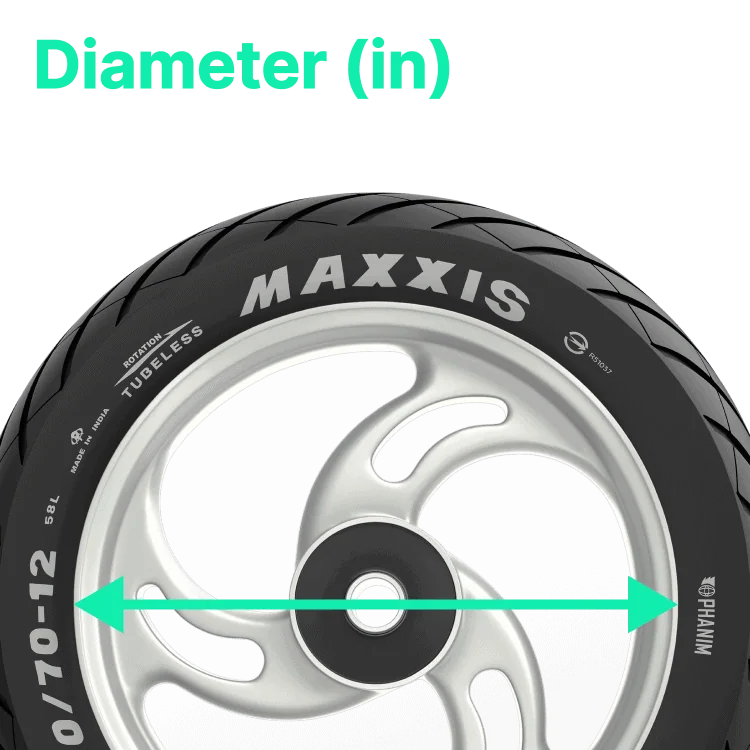TLDR
Tyre size affects your scooter’s grip, stability, and comfort. Read the sidewall for the tyre size (e.g., 100/80-12), and choose tyres that suit your riding style and road conditions. Stick to the recommended size from your scooter’s manual.
Understanding Tyre Size Specifications
Tyre sizes are shown in a format like 100/80-12. Here’s what each number means:
1. Tyre Width (e.g., 100)

- Measured in millimetres.
- A wider tyre provides more grip and stability.
- Example: A 100-width tyre is 100 mm wide.
2. Aspect Ratio (e.g., 80)

- The tyre’s height as a percentage of its width.
- Example: An 80 aspect ratio means the tyre’s height is 80% of its width.
Impact on performance:
- Lower aspect ratio = sharper handling, less comfort.
- Higher aspect ratio = smoother ride, less cornering precision.
3. Rim Diameter (e.g., 12)

- The wheel’s diameter in inches.
- Must match your scooter’s rim size.
Common Tyre Sizes for 110cc–125cc Scooters
Front Tyres
- 90/90-12
- 100/80-12
Rear Tyres
- 100/80-12
- 110/70-12
Always check your scooter’s manual or tyre sidewall to confirm the correct size.
How to Choose the Right Tyres
1. City Commuting
- Use: 100/80-12 or similar
- Why: Balances grip, fuel efficiency, and comfort in stop-start traffic.
2. Long-Distance or High-Speed Riding
- Use: 110/70-12 or similar
- Why: Lower aspect ratio tyres offer better control and stability at speed.
3. Wet or Rainy Conditions
- Use: Tyres with deep tread and rain-optimised patterns
- Why: Enhances grip and reduces risk of aquaplaning.
Tyre Maintenance Tips
1. Check Tyre Pressure Weekly
- Use a pressure gauge and follow your scooter’s specs.
- Proper inflation improves fuel economy and tyre life.
2. Monitor Tread Depth
- Replace tyres if tread depth is under 1.6 mm.
- A tread depth gauge can provide an accurate reading.
3. Inspect for Damage
- Look for cracks, cuts, bulges, or uneven wear.
- Replace immediately if damage is found.
4. Understand the Effects of Tyre Pressure
- Underinflation:
- Increases tyre wear and fuel use.
- Raises blowout risk.
- Overinflation:
- Reduces grip.
- Causes uneven tread wear.
5. Consider Nitrogen Inflation
- Benefits include:
- Lower operating temperatures
- Longer tyre life (up to 20%)
- More stable pressure retention
When to Replace Your Tyres
- Tread is less than 1.6 mm
- You see visible damage
- Handling feels loose or braking distances increase
- Tyre vibrates more than usual while riding
Punctures and Repairs
- Small punctures may be repairable depending on location.
- Avoid unsafe roadside repairs—always get a qualified technician to inspect punctures.
- Visit a Motion Rental technician for a safe, professional repair.
Our Recommendation
Use only tyre sizes and specs recommended in your scooter’s manual. Tailor your tyre choice to match your riding needs and conditions. If you’re unsure, our team can help you choose the right fit for your scooter.
Final Notes
Correct tyre size ensures safety, fuel efficiency, and ride quality. Regular inspections and proper inflation go a long way toward preventing early tyre wear or accidents. Avoid improvising with off-spec tyres—even small changes can affect handling and safety.
